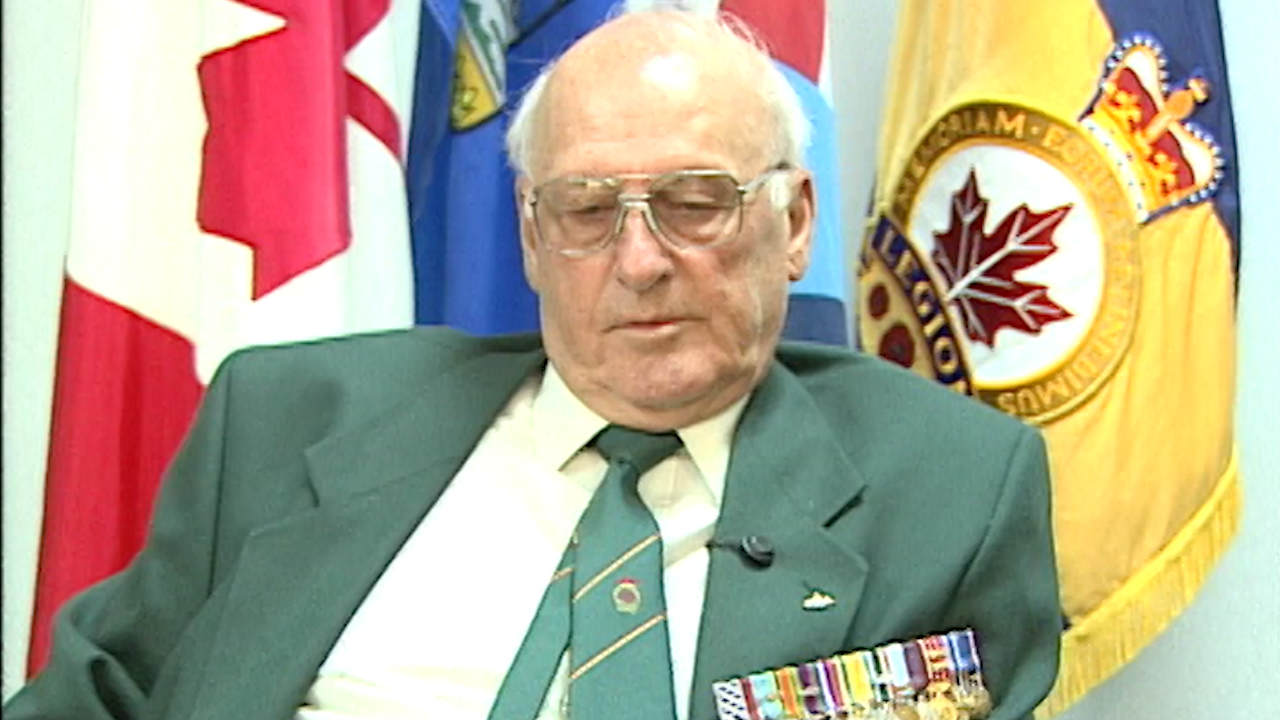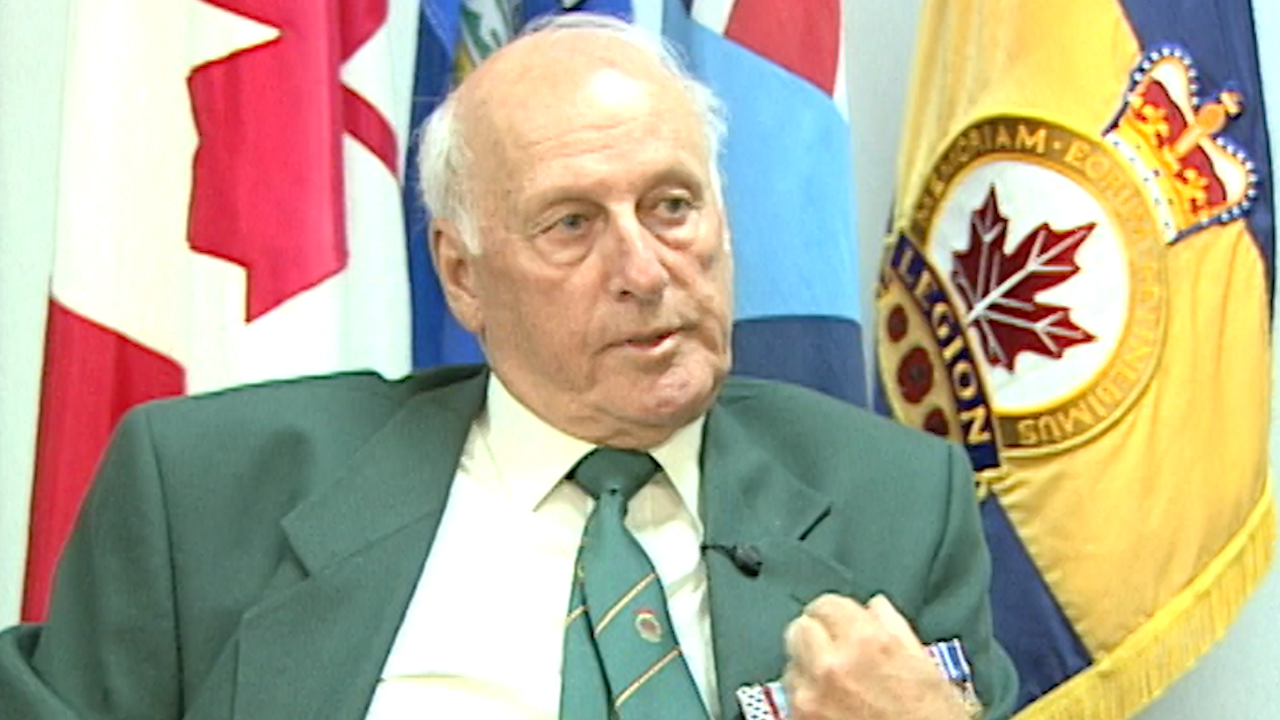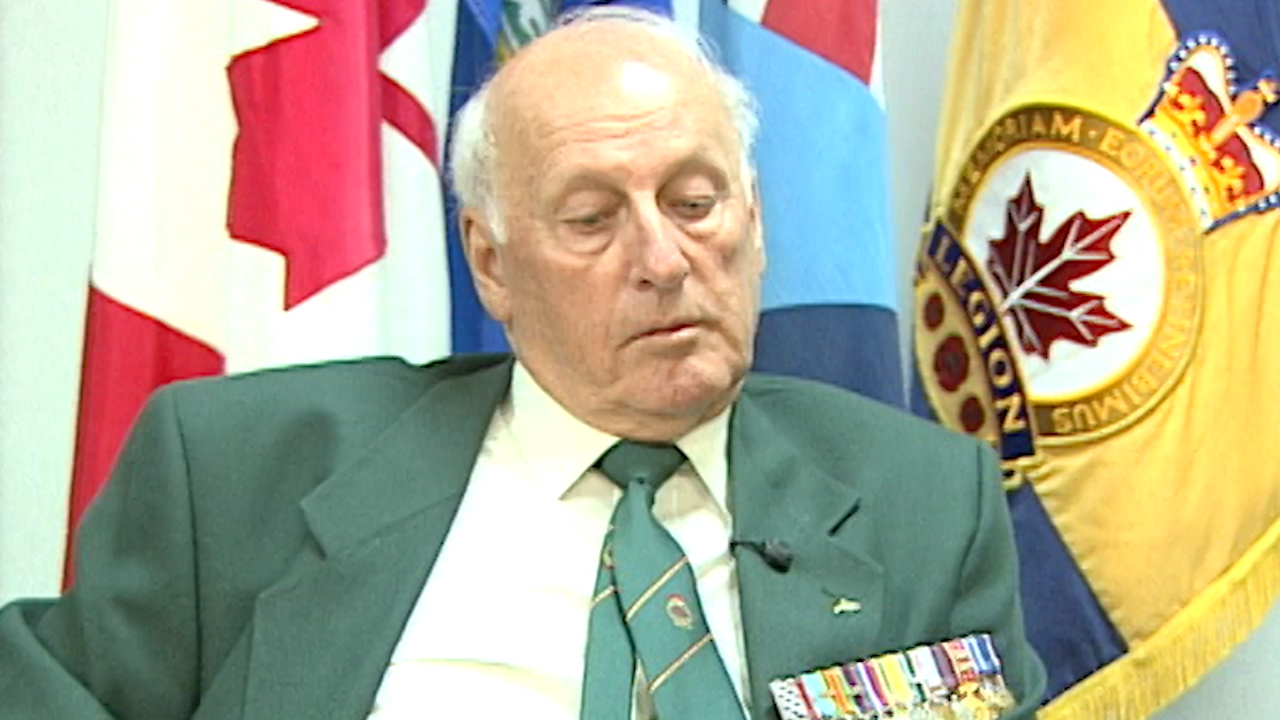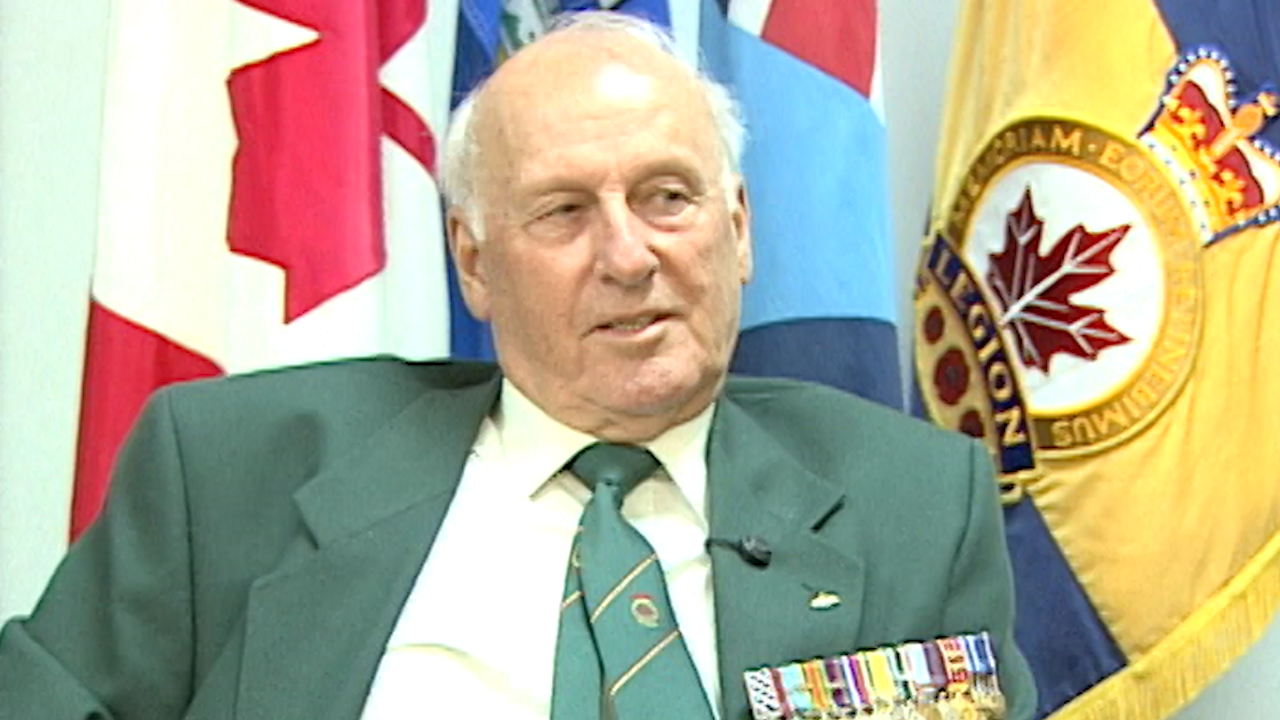Crossing the North Atlantic in Convoy
Heroes Remember
Crossing the North Atlantic in Convoy
Transcript
Description
Mr. Lindsey is finally posted to an operational unit. He is sent to Halifax, Nova Scotia, where he sails in a convoy to Britain. He is asked what he remembers of the crossing.
James Douglas Lindsey
Mr. Lindsey was born in Arnprior, Ontario, and spent his early years on a reservation in Quebec, returning to Arnprior for his schooling. He was active in school sports. He had one younger sister who died of cancer when she was about 38 years old. His father was in the lumber and logging business as was his grandfather. Mr. Lindsey's father was a Regimental Sergeant Major during the First World War and was active in the 42nd Renfrew Regiment Reserves after his First World War service. Mr. Lindsey tried to enlist when the Second World War was declared but was turned down because of his age. He was finally accepted by the RCAF at the age of 17 years with the condition that he complete his schooling first. Eventually, he received training in Toronto and Trenton, Ontario, and Victoriaville, Quebec. It was then on to Chatham, New Brunswick, for pilot training at the Elementary Flying School and additional training at CFB Summerside, PEI. He was then posted back to Trenton to train as a pilot instructor.
Meta Data
- Medium:
- Video
- Owner:
- Veterans Affairs Canada
- Duration:
- 02:56
- Person Interviewed:
- James Douglas Lindsey
- War, Conflict or Mission:
- Second World War
- Location/Theatre:
- North Atlantic Ocean
- Branch:
- Air Force
- Units/Ship:
- 416 Squadron
- Rank:
- Flight Lieutenant
- Occupation:
- Pilot
Related Videos
- Date modified:







